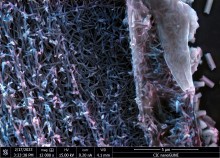Projects at a glance
QMOLESR - Addressing molecular spin qubits by ESR-STM
The emergence of ESR-STM has recently opened new perspectives on the coherent manipulation of individual spin qubits. However, to date ESR-STM experiments are essentially focused on individual magnetic atoms deposited on MgO/Ag(100). The insulating layer of MgO seems to be an essential ingredient to obtain addressable and functional single atom qubits, e.g. to fix the spin along certain directions and enable ways for its manipulation. The aim of this project is to go beyond the current restriction of ESR-STM on individual atomic qubits on MgO layers and expand its usage towards robust qubits in other environments. This will be done by using metallo-organic complexes whose organic structure is designed in such a way to play the role of the MgO layer. ESR will be performed on individual magnetic molecules and their potential as molecular spin qubits in contact with metals will be probed. The overall methodology of the project is divided into three main objectives: (1) demonstrate ESR-STM on magnetic molecules; (2) demonstrate ESR-STM on magnetic molecules in direct contact with a metallic substrate and use molecules as magnetic sensors; (3) protection of spin coherence by superconductivity. The impact of the project goes beyond the purely scientific interest and it extends to the industrial sectors of technology and telecommunications. This is because it actually opens the possibility of implementing spintronic devices aimed at storage and manipulation of quantum information in which the individual qubits can be concretely addressed thanks to some type of electrode. Moreover, the coherent control of quantum states is currently under large demand in Europe. In this regard, the highly specialized expertise acquired by the researcher thanks to this project will clearly be an added value in the preparation of his future career. In conjunction with its scientific aim, QMOLESR is designed to train an excellent, independent researcher who will develop his research career.
HYTEM - Organic-inorganic hybrid thermoelectric materials through a new concept of simultaneous vapor phase coating and infiltration (VPI/SCIP)
Polymers and inorganics come together to support novel waste heat harvesting.
Organic-inorganic hybrid materials can significantly enhance the design space for novel functionalities, integrating the best properties of the individual components and even resulting in new ones. Polymers and functional inorganic compounds are the top players in the world of materials science. With the support of the Marie Skłodowska-Curie Actions programme, the HYTEM project will bring them together literally, generating inorganic structures simultaneously in the subsurface of a bulk polymer and on its top surface. The expected result: novel hybrid thermoelectric materials able to scavenge waste heat and turn it into electricity with unparalleled efficiency.
SPIR - Spasers in the infrared range
One of the important directions of modern medicine is noninvasive diagnostics. The urgency of the problem is determined by the search of safe methods of examination and sparing techniques of collection of material for medical analysis when the patient does not feel pain, physical and emotional discomfort.
DELICE- Device oriented molecular spin filter based interfaces
We live in a constantly changing society in which information and communication are at the basis of our economy. To keep progressing is essential to investigate new feasible ways to control and manipulate information in order to develop faster, smaller and less consuming devices. Organic Spintronics has emerged as a promising field to develop low-cost, mechanically-flexible and multi-functional devices in which information is carried not only by the charge but also by the spin of electrons.SGPCM- Switching grapheme-plasmon with phase-change materials
Graphene plasmons (GPs), is enable the transport and control of light on an extreme subwavelength scale as well as the dynamic tunability via electric-gate voltage, which can be exploited for numerous applications such as for strong light-matter interactions, tunable infrared biosensing and absorption spectroscopy, subwavelength optical imaging, as well as for the development of tunable transformation optics devices, metamaterials and metasurfaces.








